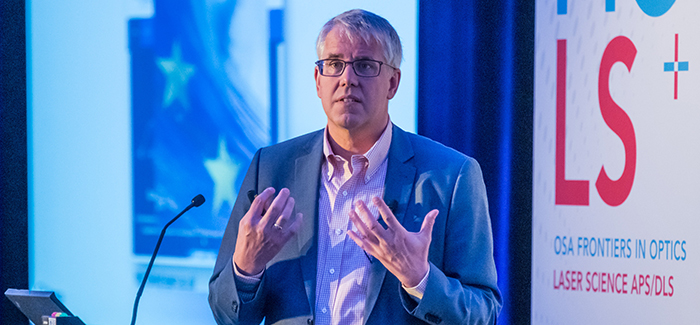Quantum Technology: The Business Side
Quantum Technology: The Business Side
Stewart Wills

Attendees at this year’s Frontiers in Optics meeting have had lots of opportunities to learn about cutting-edge quantum science, from work in quantum metrology and communication to quantum memories and simulations. But one of the meeting’s three “Visionary Speakers” keynote talks on Wednesday—while it, too, included plenty of interesting science—focused on the business and political issues emerging as quantum technology drives toward real applications.
The speaker was OSA Fellow Wilhelm Kaenders, the cofounder of TOPTICA Photonics AG, Germany, and he stressed that he intended to provide a “small-company perspective” on what’s happening worldwide in the quantum business arena. Today’s quantum scene is “remarkable from a scientific perspective,” he said, “but is also starting to evolve into some opportunities not only in business, but also in a lot of issues that are linked to more strategic and national interests.”
From “Quantum 1.0” to “Quantum 2.0”
Kaenders described TOPTICA as a “quantum-enabling-technology” company—that is, a company supplying the lasers and other technologies that underpin efforts at quantum computing, simulation and metrology, even for physical implementations that involve non-photonic systems such as cooled atoms and nitrogen-vacancy centers. And being a quantum-enabling-technology company could, he suggested, be a very good place to be.
That’s because the physics and engineering world is moving from a theoretical understanding of quantum states and early lab experiments on quantum systems (what Kaenders called “Quantum 1.0”) to technologies that seek to actively control and exploit delicate quantum properties such as superposition, entanglement and quantum coherence (“Quantum 2.0”). “Quantum mechanics is not new,” he said. “It’s the ability to control quantum phenomena at a new level that people are excited about.”
Continue reading on the Optics & Photonics News Website. >
